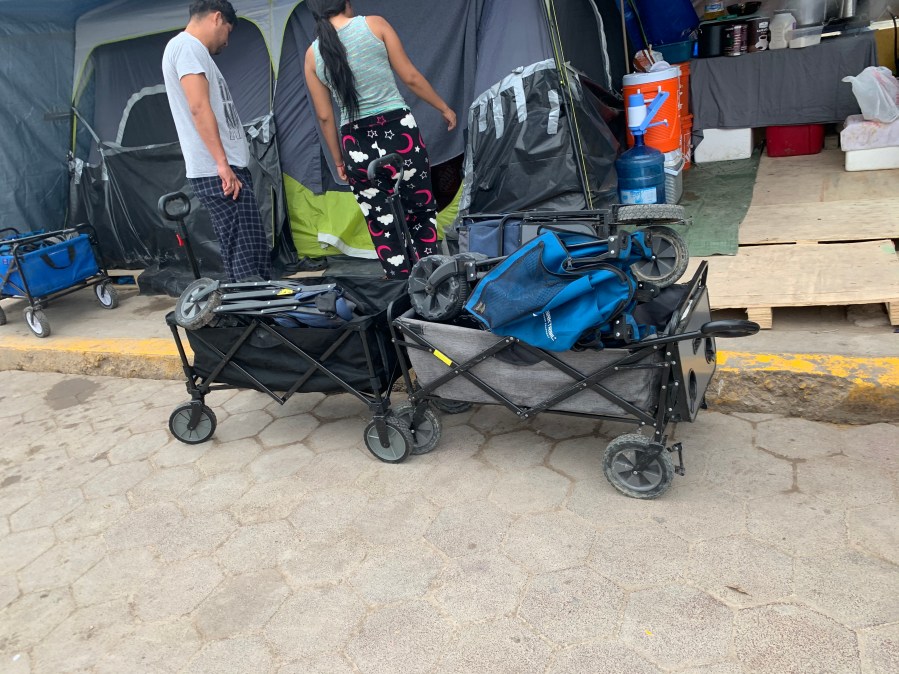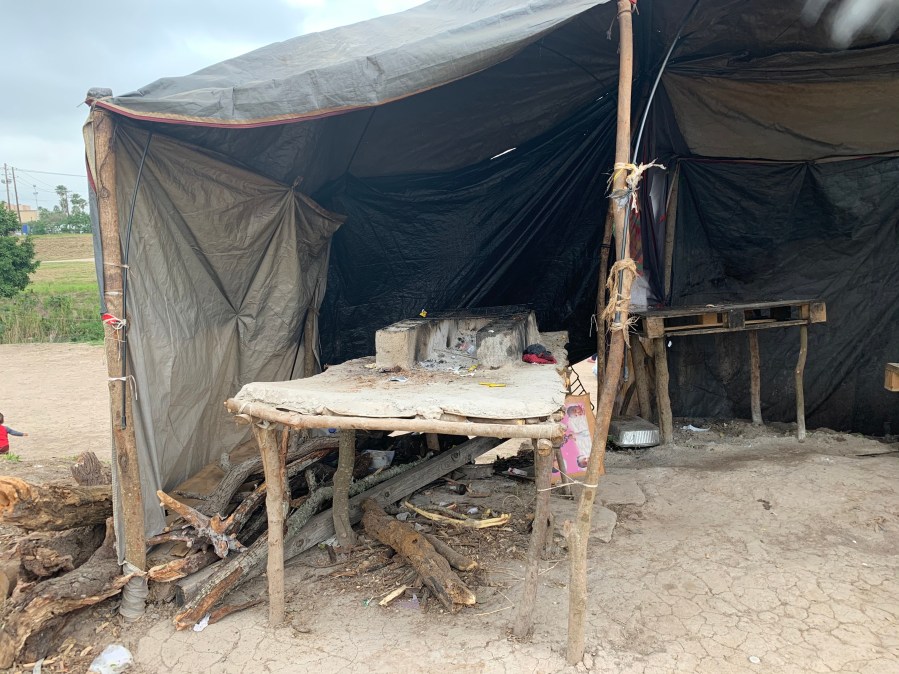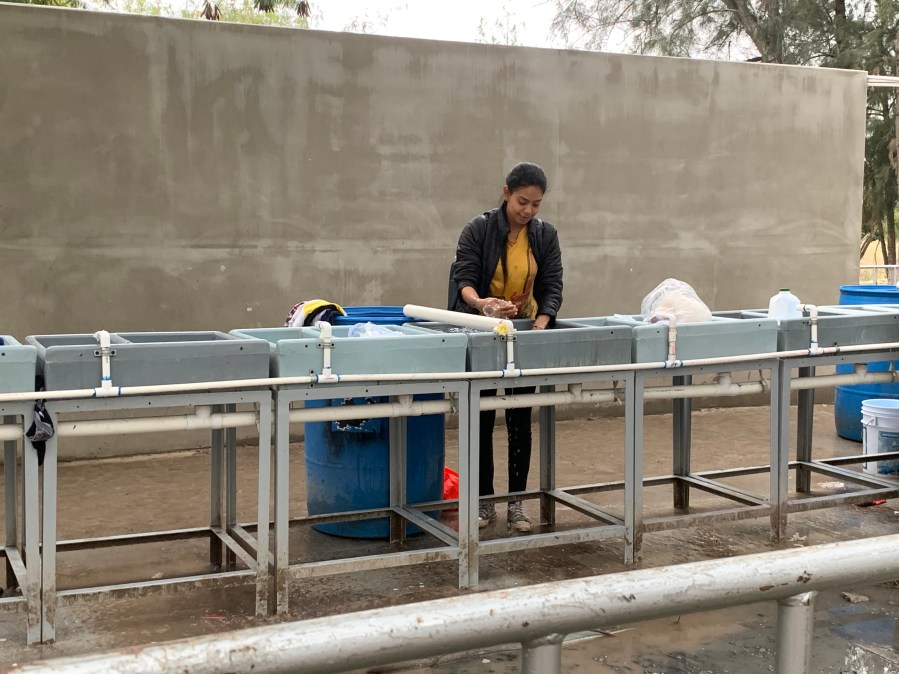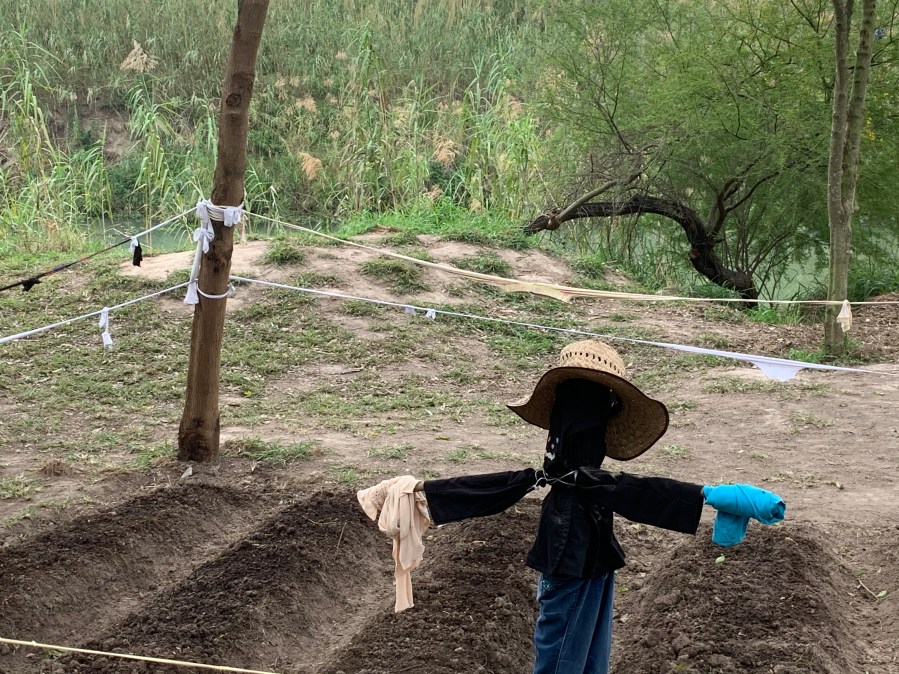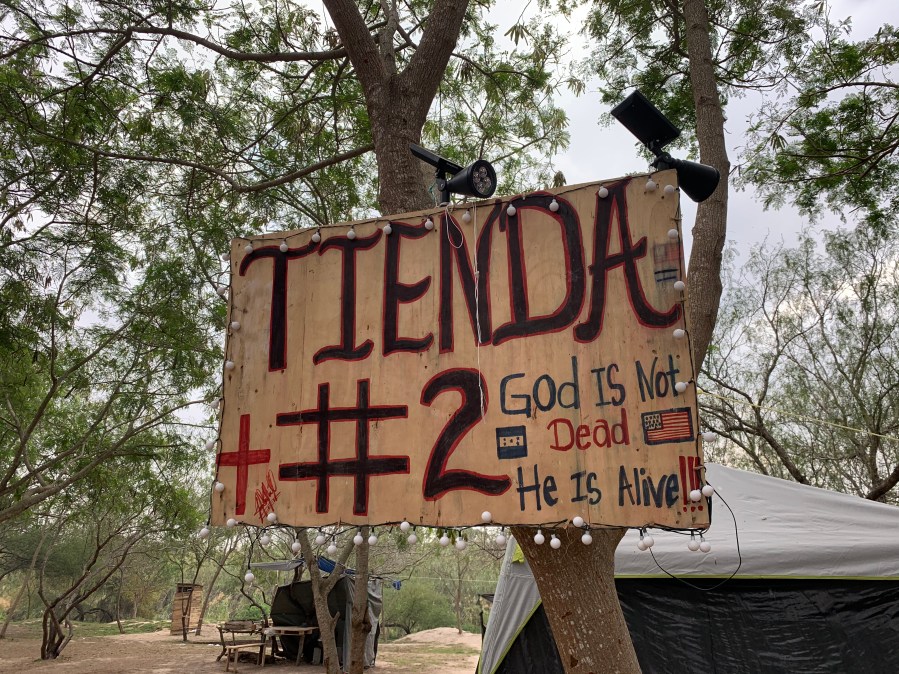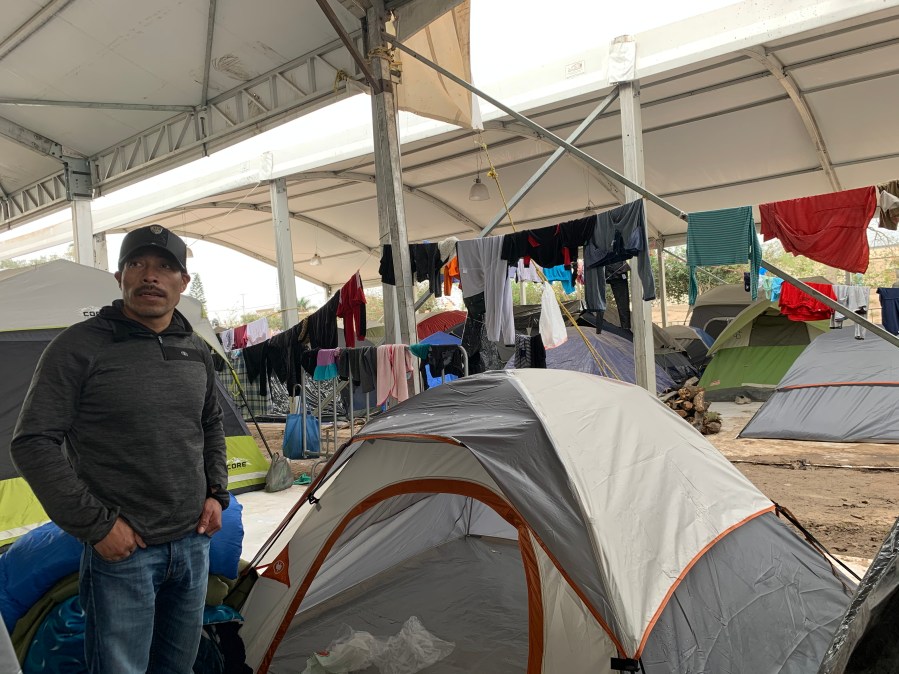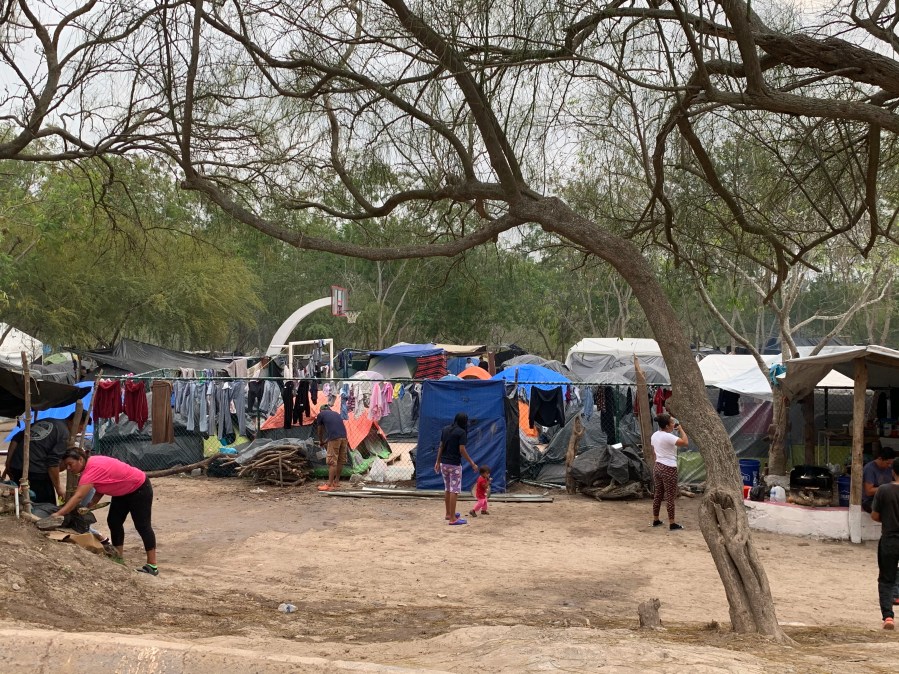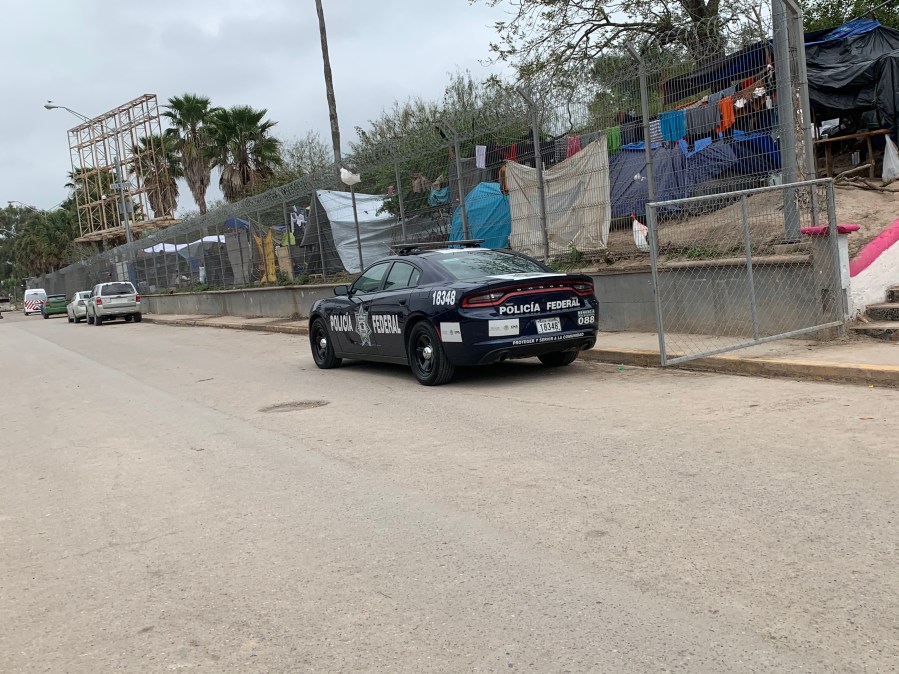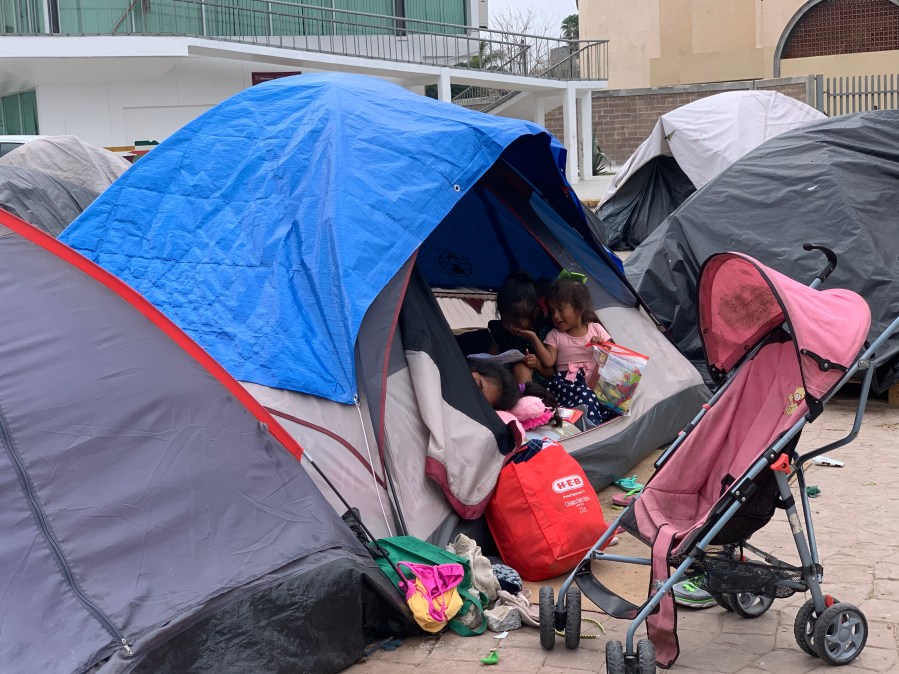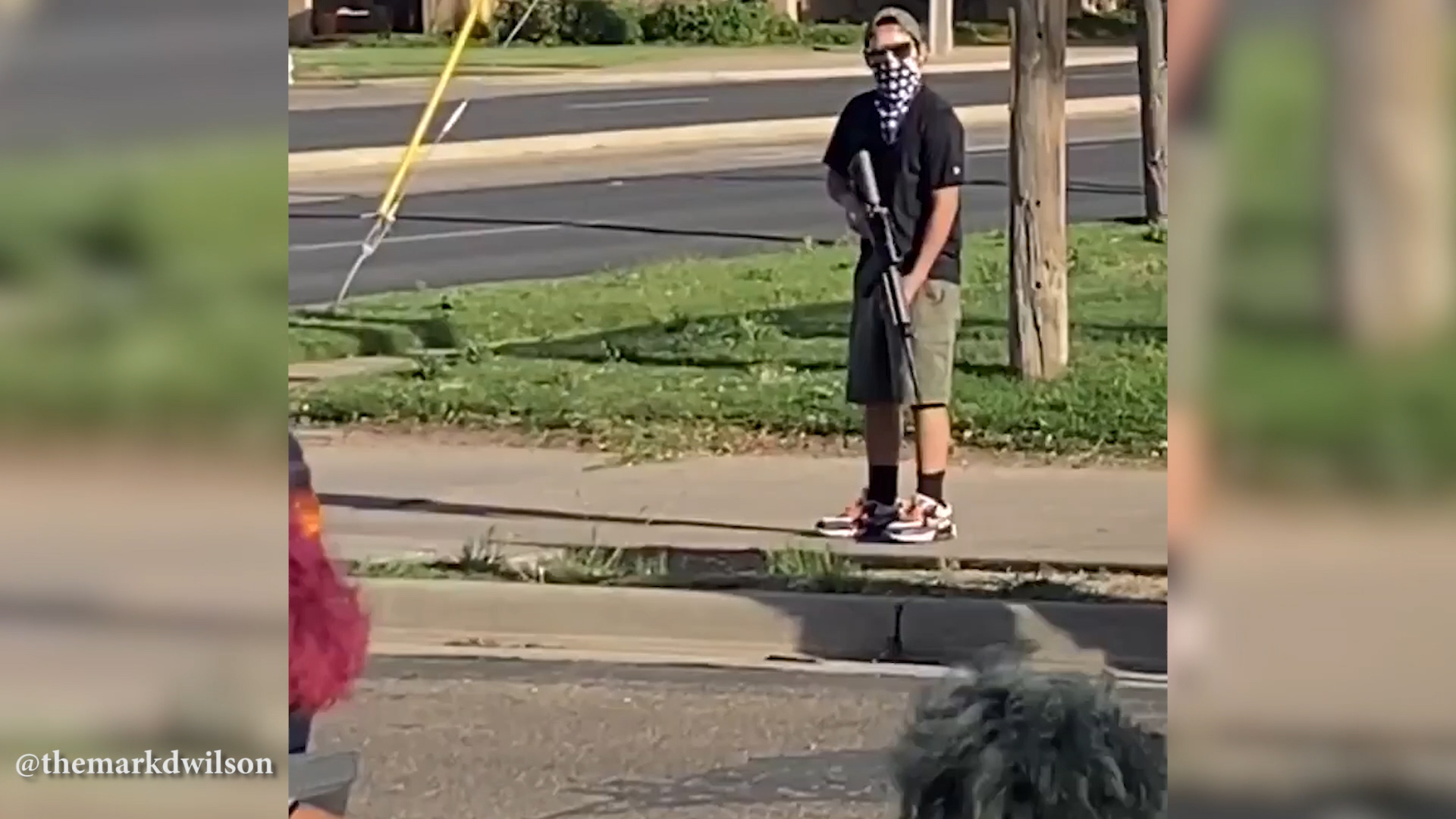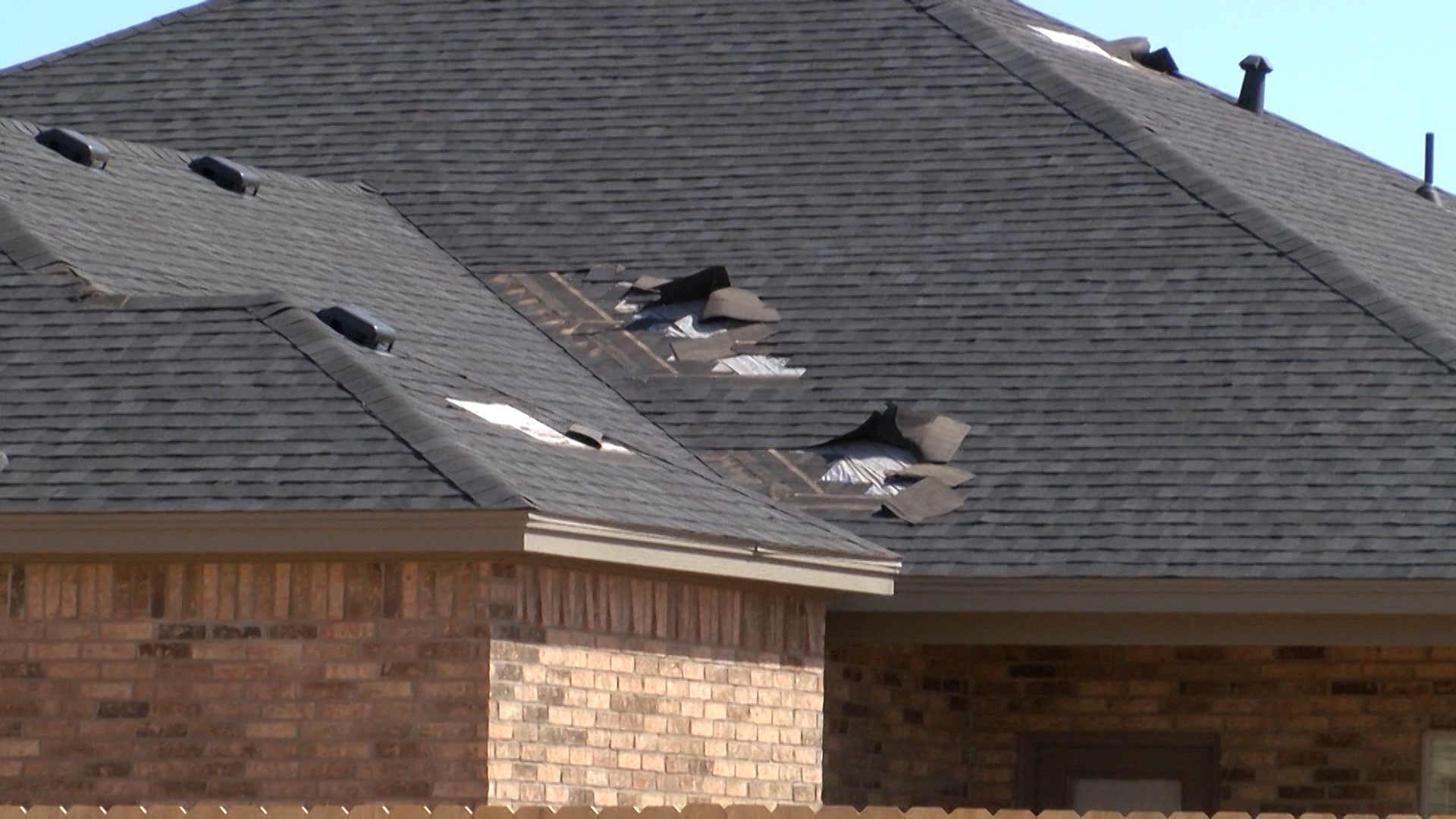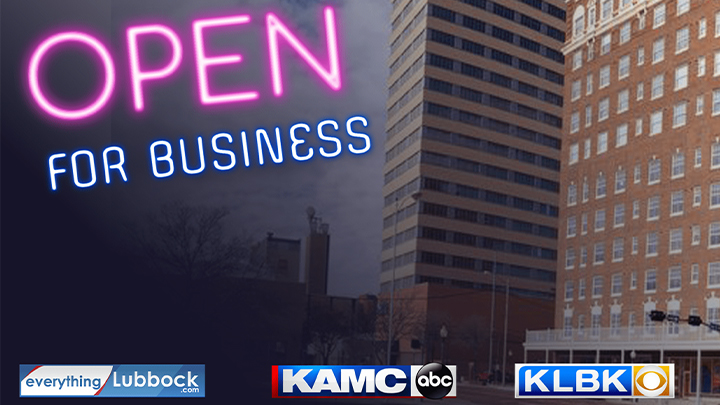MATAMOROS, Mexico (Border Report) — Tension between Mexican locals in the northern border town of Matamoros and thousands of asylum-seekers living in a refugee camp at the base of the city’s international bridge resulted in the relocation of most of the migrant families away from the bridge.
The move began on Tuesday morning and was facilitated under the direction of soft-spoken Catholic nun Norma Pimentel, the executive director of Catholic Charities of the Rio Grande Valley who is in charge of organizing the massive group of volunteers who go daily to assist the 2,500 migrants living in the tent encampment at the base of the Gateway International Bridge. The move is expected to take several days and be completed by week’s end.
She told Border Report that nearly 100 families agreed to move their tents a few blocks from the concrete base of the bridge to a forest area in a city park on the banks of the Rio Grande. It’s a move that she hopes will diffuse the hostility that locals are beginning to overtly express toward the migrants.
“They have accepted to go ahead and move to the upper level and so we’re going to help facilitate that by providing them with a new tent in an area designated where they can move, and most have agreed — the majority, if not all,” said Pimentel, who is familiarly known as Sister Norma throughout the region.
Many of those families have been living at the base of the bridge since the summer when the Trump administration implemented in South Texas the Migrant Protection Protocols (MPP) program, which requires asylum-seekers to remain in Mexico during their immigration court proceedings.
They first sought refuge in a spit of federally-protected land at the concrete base of the bridge, called “the plaza,” which is patrolled by Mexican federal law enforcement. They have repeatedly resisted efforts to relocate them, but as local opposition to them becomes more overt and they run out of space in the safe confines of the plaza, they have slowly migrated onto the dusty and muddy river banks atop a levee, a few blocks up the river. This week’s move is the largest by far and will, in essence, leave bare the concrete square.
Relations have been increasingly strained between the migrants and locals, who openly complain about the smell, trash and unsightly camp conditions as they cross the bridge.
On Sunday, a protest rally was held in downtown Matamoros organized by locals who oppose the migrants. Another rally is planned for Jan. 31 in the city in front of the U.S. Consulate office. In early November, Matamoros officials with a child protective service agency were sent to the camp to round up the children to take them to a city shelter as temperatures plummeted. Mexican officials said they were concerned for the childrens’ welfare and safety, but many migrant families said they did not trust the officials and thought it was an attempt to get rid of them.
Catholic Charities of the RGV and other volunteer groups, like Team Brownsville and Angry Tias & Abuelas last year raised nearly half a million dollars to purchase 1,500 plastic free-standing portable units from Ikea that would keep families out of the elements, and help protect them from the venomous coral snakes that live on the banks of the Rio Grande. But, Mexican officials rejected the idea.
Tuesday’s move, it seems, was a definite compromise that not all of the migrants said they wanted.
“It’s going to help the overall city. The city residents are not very happy with the image they have down there and so by moving them up here the whole city image will get cleaned up and it’s going to return to the residents being fully more comfortable in their own city,” Pimentel said.
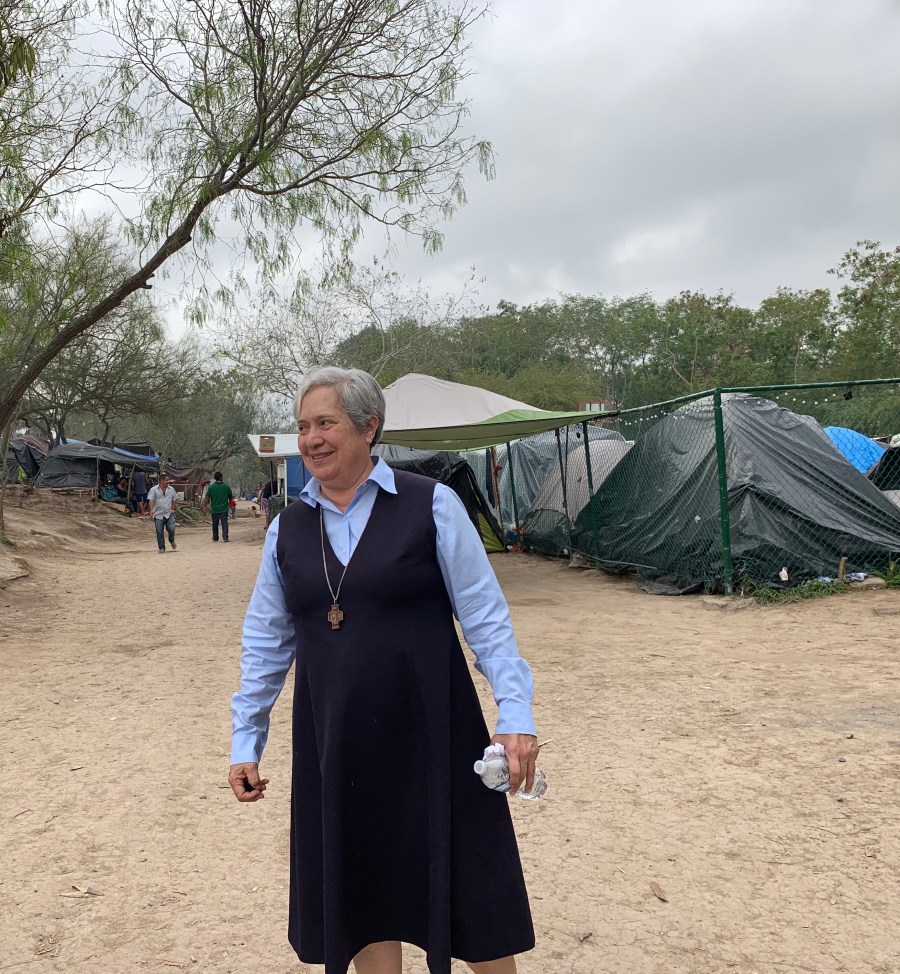
As she stood on the dusty river banks assessing the available land on Tuesday morning, Pimentel conceded that the move is something that Mexican immigration authorities, the Instituto Nacional de Migración, has wanted since late last year when they began taking a more active role in helping the migrants at the tent encampment.
“Since the beginning, Immigration wanted us to encourage them to move. I said it’s got to be their choice. These families, we have to respect them. They need to see that it’s a better option for them to move from where they are at. So they have agreed and said yes,” Pimentel said.
“Today is a big day for the people who live closest to the bridge in the plaza area because they have made a decision along with Team Brownsville members and the encouragement of other organizations that it’s time for them to move up because that’s where all the services are provided,” said Andrea Rudnik, who manages the volunteers for the nonprofit Team Brownsville.
Today is a big day … It’s time for them to move up because that’s where all the services are provided.”
Andrea Rudnik, Team Brownsville
Rudnik said that over the course of the last six weeks, “people have been encouraged to go” and that has resulted in the plaza — which in the fall had been full of hundreds of families — to dwindle in numbers. Many of the migrants were attracted to growing amenities offered in the levee area on the river’s banks.
On Dec. 5, Mexican officials began constructing four giant tent pavilions in the vicinity. At first, migrants resisted the move, but on Tuesday there were hardly any open areas at all to be found under the pavilions. The only available area was a small pup tent that two Mexican men who just arrived from Chiapas were considering moving into. The only problem was, it was under two obvious holes in the new nylon pavilion roof, which leaks when it rains.
As rain clouds formed in the distance and the sky grew dark on Tuesday, the men weighed their options as to whether they would call this soggy spot their new home.
Roberto Peralto, a Honduran who has been living in Matamoros for 10 months and whose tent is located on a grassy slope close to the base of the bridge, on Tuesday talked with other migrants about where they would be relocating.
“Yes we’re going to move over there,” Peralto said. “We really don’t want to move, but given the present circumstances we cannot stay here and so it’s better to move and be closer to the food.”

A food tent operated by World Central Kitchen was set up in the levee area a week ago, and living closer to it will enable the migrants more access to the meals that volunteers prepare and serve. Relocating away from the plaza also will mean that Rudnik’s volunteer crew will have to trek further every morning and evening as they serve breakfasts and dinners. They will have to climb the unsteady embankment and manage their wagons down steep stairs.
“There has been security in the plaza because they’ve been there a long time. You get used to anything,” Rudnik said. “But we’re Americans, and as Americans, we are guests in Mexico. And so when the federal government, the INM, tells us that they have a plan for the asylum-seekers, we have to work with that plan.”
Constructed near the pavillions where the migrants are relocating is a bank of portable toilets, showers, an outdoor station for washing clothes, and a potable drinking water station. A garden plot also has been set up, cordoned off by clothes strung together with a stick-figure scarecrow made out of clothes placed in the middle of the freshly-tilled dirt.

“Here it is not safe anymore as people pass in the cars and say stuff as they go over the bridge. At least there are bathrooms up there and everybody is going up there,” said Noel Rodriguez, of Honduras.
“Today we’re going to have to take all our stuff and our tents and go to the forest,” said Yamali Flores, of Honduras, who operates what is called “Tienda 1,” a free supply store where migrants can get clothes, shoes, tent repairs and Band-Aids. “We’ve been here very long time but for all practical purposes today is the day we have to move.”
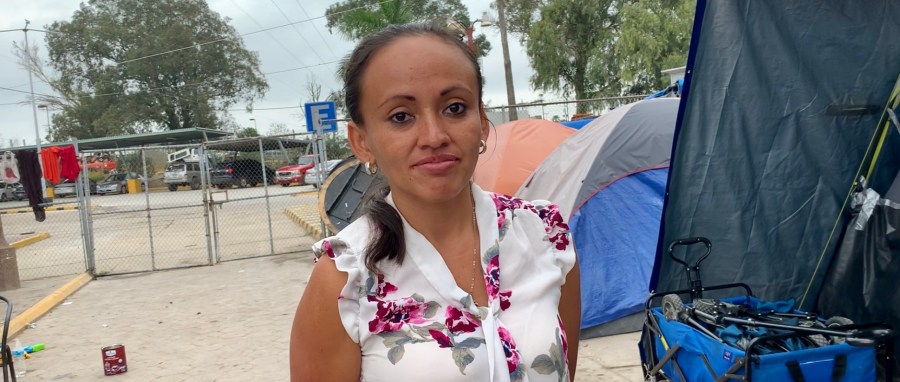
On Tuesday morning, Flores was beginning to load up wagons with the goods, which she expected would take several trips to get to their new location, about 3 blocks away. “It is for our safety. The Mexican nationals — some of them are angry toward us and for this reason we need to head to the forest where we are supposed to be safer,” she said.
Since Aug. 3, Flores has been living in the plaza with her three children, who are now ages 13, 9 and 7.
Vanessa Villalobos’ baby, Jimena Lucia, is now 8 months old and has been living in the plaza since she was only 3 months old. Her other daughter, Valeria Crystal, will likely have her tenth birthday in the refugee camp.
On Tuesday, Villalobos fretted about the idea of leaving the concrete area where she and her family have been since early August. When asked if she wanted to move, she replied: “No, but we have to. It’s an obligation.”
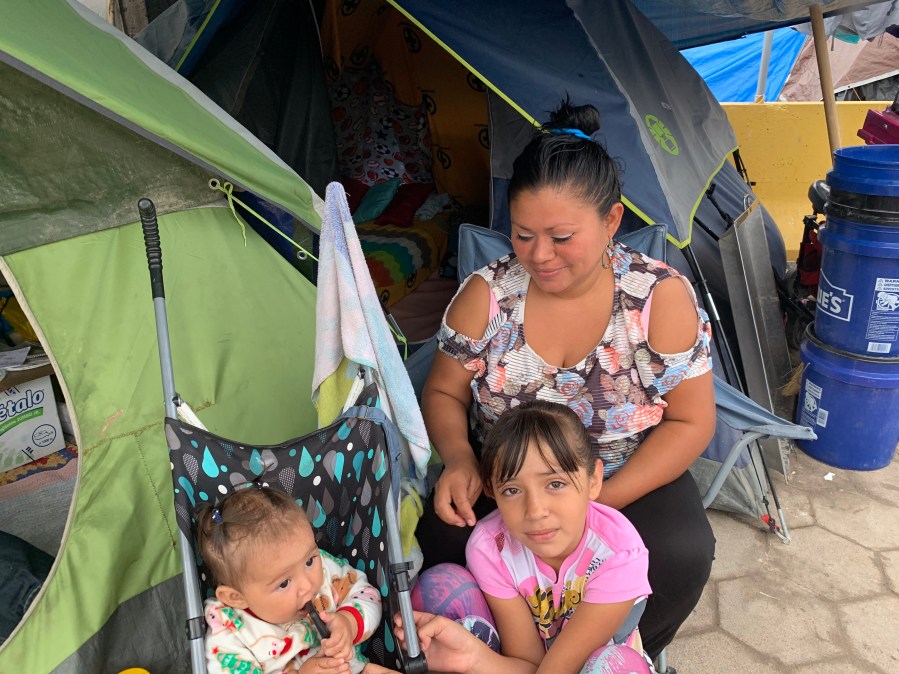
Visit the BorderReport.com homepage for the latest exclusive stories and breaking news about issues along the United States-Mexico border.
